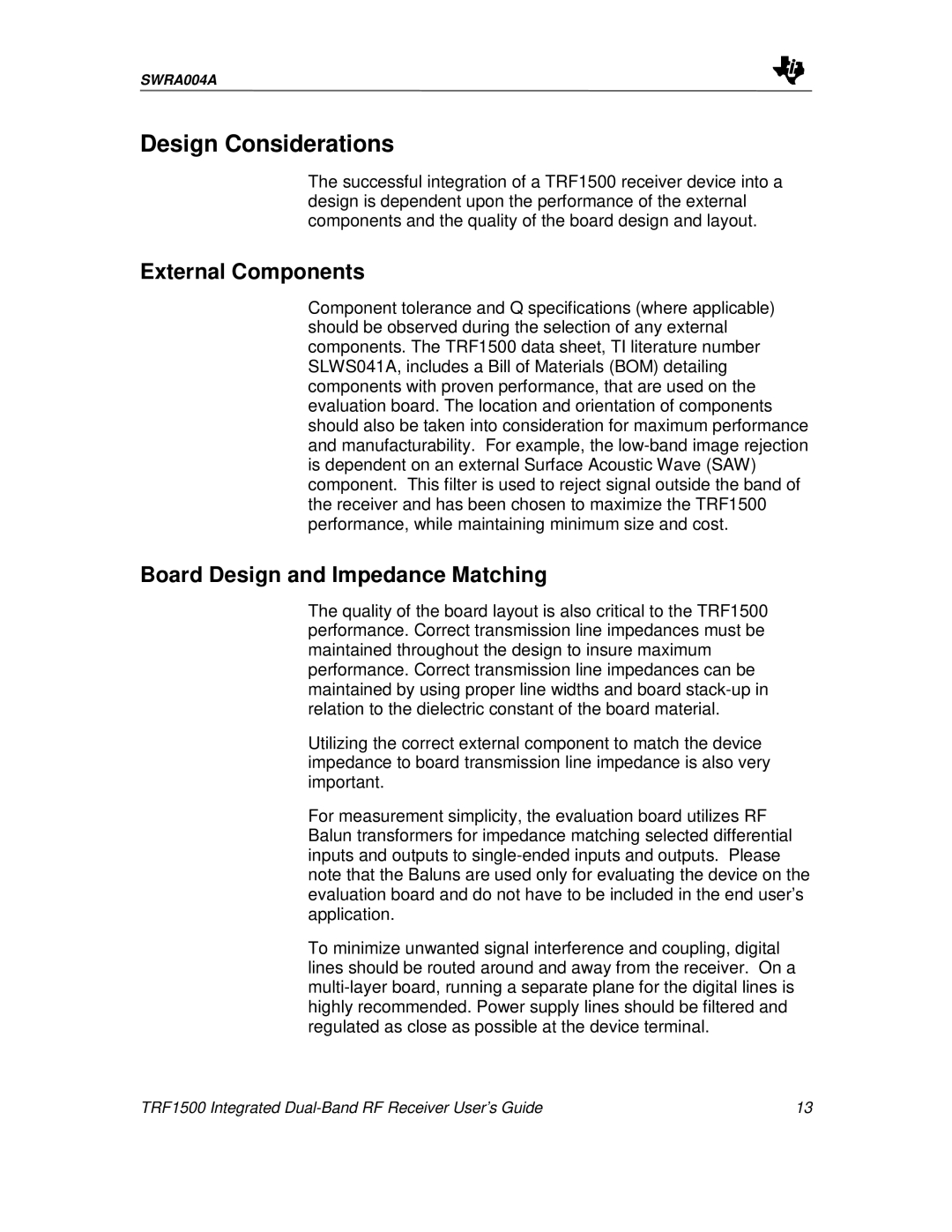SWRA004A
Design Considerations
The successful integration of a TRF1500 receiver device into a design is dependent upon the performance of the external components and the quality of the board design and layout.
External Components
Component tolerance and Q specifications (where applicable) should be observed during the selection of any external components. The TRF1500 data sheet, TI literature number SLWS041A, includes a Bill of Materials (BOM) detailing components with proven performance, that are used on the evaluation board. The location and orientation of components should also be taken into consideration for maximum performance and manufacturability. For example, the
Board Design and Impedance Matching
The quality of the board layout is also critical to the TRF1500 performance. Correct transmission line impedances must be maintained throughout the design to insure maximum performance. Correct transmission line impedances can be maintained by using proper line widths and board
Utilizing the correct external component to match the device impedance to board transmission line impedance is also very important.
For measurement simplicity, the evaluation board utilizes RF Balun transformers for impedance matching selected differential inputs and outputs to
To minimize unwanted signal interference and coupling, digital lines should be routed around and away from the receiver. On a
TRF1500 Integrated | 13 |
